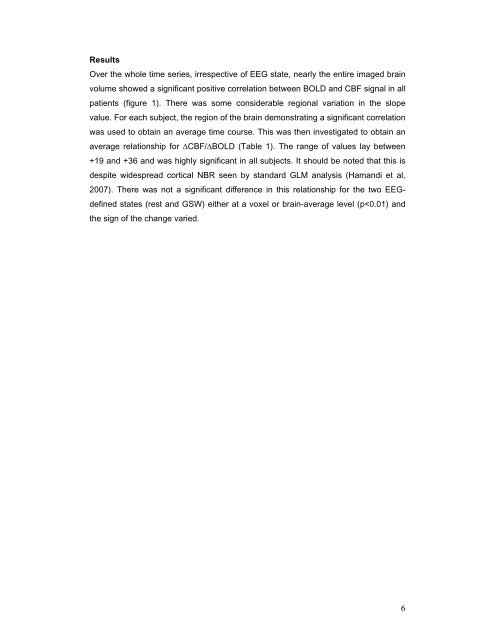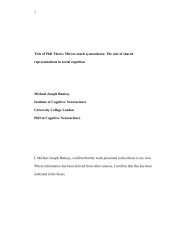An investigation of the relationship between BOLD and perfusion ...
An investigation of the relationship between BOLD and perfusion ...
An investigation of the relationship between BOLD and perfusion ...
Create successful ePaper yourself
Turn your PDF publications into a flip-book with our unique Google optimized e-Paper software.
Results<br />
Over <strong>the</strong> whole time series, irrespective <strong>of</strong> EEG state, nearly <strong>the</strong> entire imaged brain<br />
volume showed a significant positive correlation <strong>between</strong> <strong>BOLD</strong> <strong>and</strong> CBF signal in all<br />
patients (figure 1). There was some considerable regional variation in <strong>the</strong> slope<br />
value. For each subject, <strong>the</strong> region <strong>of</strong> <strong>the</strong> brain demonstrating a significant correlation<br />
was used to obtain an average time course. This was <strong>the</strong>n investigated to obtain an<br />
average <strong>relationship</strong> for ∆CBF/∆<strong>BOLD</strong> (Table 1). The range <strong>of</strong> values lay <strong>between</strong><br />
+19 <strong>and</strong> +36 <strong>and</strong> was highly significant in all subjects. It should be noted that this is<br />
despite widespread cortical NBR seen by st<strong>and</strong>ard GLM analysis (Ham<strong>and</strong>i et al,<br />
2007). There was not a significant difference in this <strong>relationship</strong> for <strong>the</strong> two EEG-<br />
defined states (rest <strong>and</strong> GSW) ei<strong>the</strong>r at a voxel or brain-average level (p

















